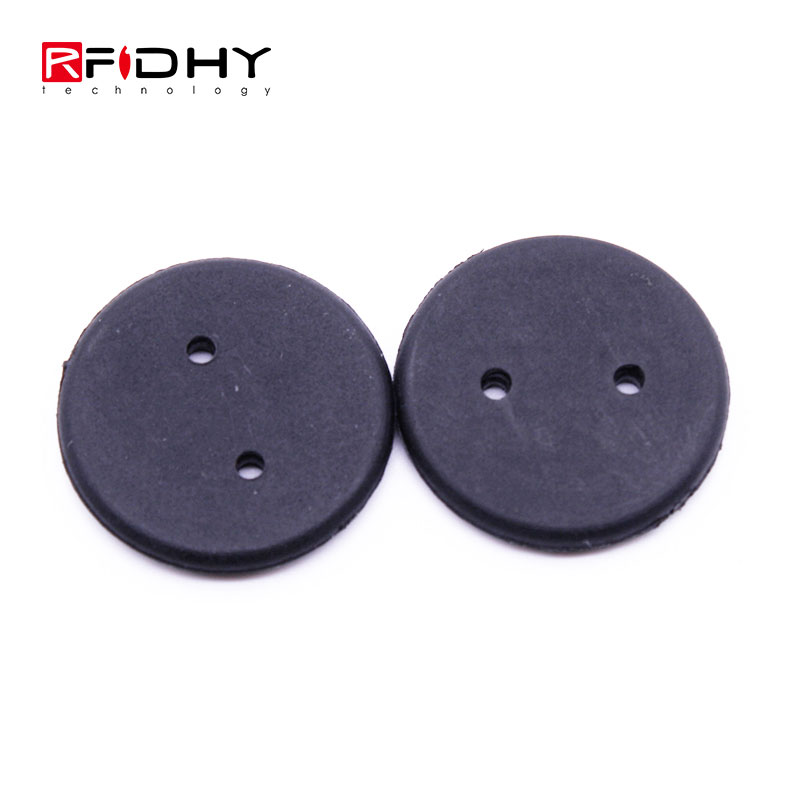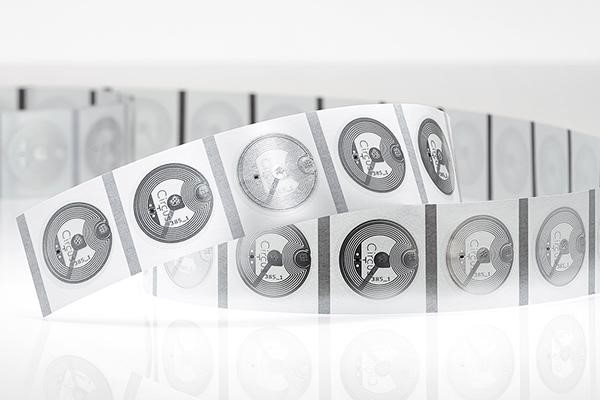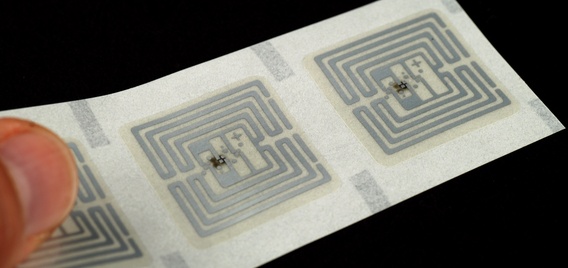Mikrochips, die in RFID-Tags eingebettet sind, können Impfstoffe verfolgen und authentifizieren, Testkits, medizinische Geräte und PSA von der Herstellung bis zum Klinikstandort.
Funkfrequenz-Identifikation (Rfid) Technologie feierte in den letzten Jahren ein Comeback, im Einzelhandel, Airline-Logistik und Gepäckverfolgung sowie im Gesundheitswesen.
Jetzt wird es im Kampf gegen COVID-19 eingesetzt.
Mikrochips, die in RFID-Tags eingebettet sind, können den Weg des Impfstoffs von der Herstellung zum klinischen Standort verfolgen und authentifizieren., zusammen mit Antikörper-Testkits, Persönliche Schutzausrüstung (Ppe), medizinische Geräte und hochwertige medikamentöse Behandlungen.
RFID überwacht sogar einige Gesundheitsmediziner’ Verwendung von Handwaschanlagen.
Die Technologie hat weit verbreitete Anwendungen in medizinischen Lieferketten, und seine Fähigkeit, Daten in Echtzeit zu verfolgen und zu übertragen, hilft Managern, die Sichtbarkeit während der sich schnell verändernden Coronavirus-Pandemie aufrechtzuerhalten.
- RFID authentifiziert Testkits und PSA
 Blockchain-Unternehmen SUKU arbeitet mit Smartrac zusammen, ein Unternehmen von Avery Dennison, zur digitalen Überprüfung und Authentifizierung von COVID-19-Testkits und PSA mittels einer Nahfeldkommunikation (Nfc) RFID-Tag. Die Daten fließen in die Digital Identity Platform von Avery Dennison ein, die in die Blockchain-basierte Supply Chain-Anwendung der SUKU integriert ist.
Blockchain-Unternehmen SUKU arbeitet mit Smartrac zusammen, ein Unternehmen von Avery Dennison, zur digitalen Überprüfung und Authentifizierung von COVID-19-Testkits und PSA mittels einer Nahfeldkommunikation (Nfc) RFID-Tag. Die Daten fließen in die Digital Identity Platform von Avery Dennison ein, die in die Blockchain-basierte Supply Chain-Anwendung der SUKU integriert ist.
Die Tags ermöglichen die Authentifizierung der Testkits als Food and Drug Administration (Fda)-genehmigt und aus einer legitimen Quelle. Die HIPAA-konforme Plattform liefert auch Testergebnisse, auf die Ärzte mit Erlaubnis für mehr Sichtbarkeit zugreifen können. Die Plattform kann COVID-19 Hotspots identifizieren, Amir Khoshniyati, NFC Business Lead bei Avery Dennison, told Supply Chain Dive.
Die Partnerschaft stellt zugelassenen Anbietern die NFC-RFID-Tags zur Verwendung auf bestimmten Produkten wie Testkits zur Verfügung.. Wenn ein Hersteller 10,000 Tags, es hat Werkskontrolle und Rückverfolgbarkeit über diese Kits, Khoshniyati Sagte. Wenn es eine Überschreitung der 1,000 Kits, Die zusätzlichen Kits sind immer noch authentisch, haben aber keine NFC-Tags. Die Tags sind eine Möglichkeit, die Verteilung zu steuern und zu identifizieren, wer die Artikel verkaufen darf..
 Smartrac’s Near Field Communication RFID-Tags ermöglichen die Authentifizierung von Testkits, und die Daten werden in eine Plattform eingespeist, die Testergebnisse liefert.
Smartrac’s Near Field Communication RFID-Tags ermöglichen die Authentifizierung von Testkits, und die Daten werden in eine Plattform eingespeist, die Testergebnisse liefert.
Smartrac Während COVID-19 Testkits einzeln getaggt werden, PSA-Produkte werden häufiger auf Karton- oder Kartonebene getaggt, Khoshniyati Sagte.
Die Tags authentifizieren die Produktherkunft von PPE’ und enthalten Preisinformationen. Weil es Blockchain ist, “niemand kann ändern, dass. Es kann von keiner Partei manipuliert werden,” Yonathan Lapchik, SUKU-CHEF, told Supply Chain Dive. This combats some of the issues seen with questionable origin and counterfeiting. “By selling tags to these approved suppliers, you can track where they come from, generating information for the buyer, like at what price the PPE should be sold at, and if they’re authentic,” Lapchik said.
Experts predicted that as RFID technology matured it would be a natural fit for supply chain blockchain applications. The combination of the two enhances visibility and reduces errors by removing the human factor from the equation.
The platforms do not necessarily need to integrate with company systems, Lapchik said, and so far customers haven’t wanted to integrate them, though that may happen as the pandemic continues. Users can view the data without additional software by tapping their smartphones close to the test kit or PPE label.
- Real-time visibility for plasma and vaccines
Several companies are using sensor RFID technology to track plasma, some of which is used in treating COVID-19 patients.
Im Juni, Biolog-id announced it was supplying RFID tracking of convalescent plasma for LifeShare Blood Center in the south-central U.S. This plasma is collected from patients recovering from COVID-19, to provide antibodies to patients fighting the disease. The technology provides real-time visibility from collection to distribution, Biolog-id said in a press release.
“Can’t be manipulated by any party.”
Yonathan Lapchik
CEO, SUKU
Vaccines are not currently equipped with dose-level tracking, Mahesh Veerina, CEO of Cloudleaf, an IoT sensor and visibility company, told Supply Chain Dive. COVID-19 accelerated the digitization efforts for vaccines and supply chain tracking, he said, given the billions of anticipated vaccine doses needed.
ApiJect Systems America, a packaging manufacturer contracting with the government, is offering space for an NFC RFID chip on individual prefilled syringes, it said on its website. The chip links to a health worker’s phone, and administrators can remotely track each injection in real time.
RFID technology and blockchain tracking ensure vaccines are not counterfeit or tampered with, and they verify the chain of command. Sensors can also verify that vaccines are sent to the designated countries and locations, with information reported back to the World Health Organization, Veerina said.
- Hospital monitoring, from inventory to hand-washing
While not COVID-19 specific, RAIN RFID, another sensor technology, is using the technology in multiple ways inside hospitals. Hand-washing hygiene is always an important directive in healthcare, but during a pandemic, it’s even more important.
“RAIN RFID is making it more feasible for hospitals to ensure compliance of staff with hand-washing protocols,” Sandy Murti, VP of global partner development at Impinj, told Supply Chain Dive. An RFID reader at a hand-washing station can read a badge or tag on a healthcare worker’s uniform. Management can use the information to track when and how often the person is washing their hands.
RFID tags in hospitals can track medical equipment without workers having to touch assets or manually inspect them.
RFID is used more frequently in hospitals to track durable medical equipment and other high value assets. “It does so without having to touch the assets or manually inspect them,” Murti said. Staff can quickly locate the equipment in the hospital, as fixed RFID readers throughout the facilities can track the equipment’s movement and location.
RFID tags are also used to track consumables like medications or higher value supplies. “The low cost of labels used in high volumes can be treated as throwaways, affixed to medical supplies. They help with a more accurate inventory supply level in a hospital, and help optimize use of the supplies, to put them where they’re needed, and to replenish them if getting too low,” Murti said.
The RAIN RFID tags are also popular with hospital linen services, so staff don’t have to manually count linens when they leave and arrive back at the hospital after cleaning.
[RFID-Tags] help with a more accurate inventory supply level in a hospital … to put them where they’re needed, and to replenish them if getting too low.”
Sandy Murti VP of global partner development, Impinj
Companies choose RFID options based on need. Scanners can read hundreds of RAIN tags within seconds at a distance of 10 An 30 Füße. NFC tags have a more limited use case, according to Murti, because single tags are read at once and over a shorter range.
“Das Interesse der Krankenhäuser und ihrer Partner an der Nutzung der Technologie hat aufgrund des Drucks in der Lieferkette insgesamt zugenommen.,” Murti said. “Für Krankenhäuser mit der Technologie, Sie können mit der Verfolgung einer Kategorie von Elementen beginnen, wie hochwertige Medikamente. Da sie sich mit seiner Verwendung und Wirksamkeit wohler fühlen, Es ist nicht ungewöhnlich, dass sich die Adoption auf andere Arten von Lieferungen und Vermögenswerten ausbreitet.”
Geschichte aus Supply Chain Dive.






